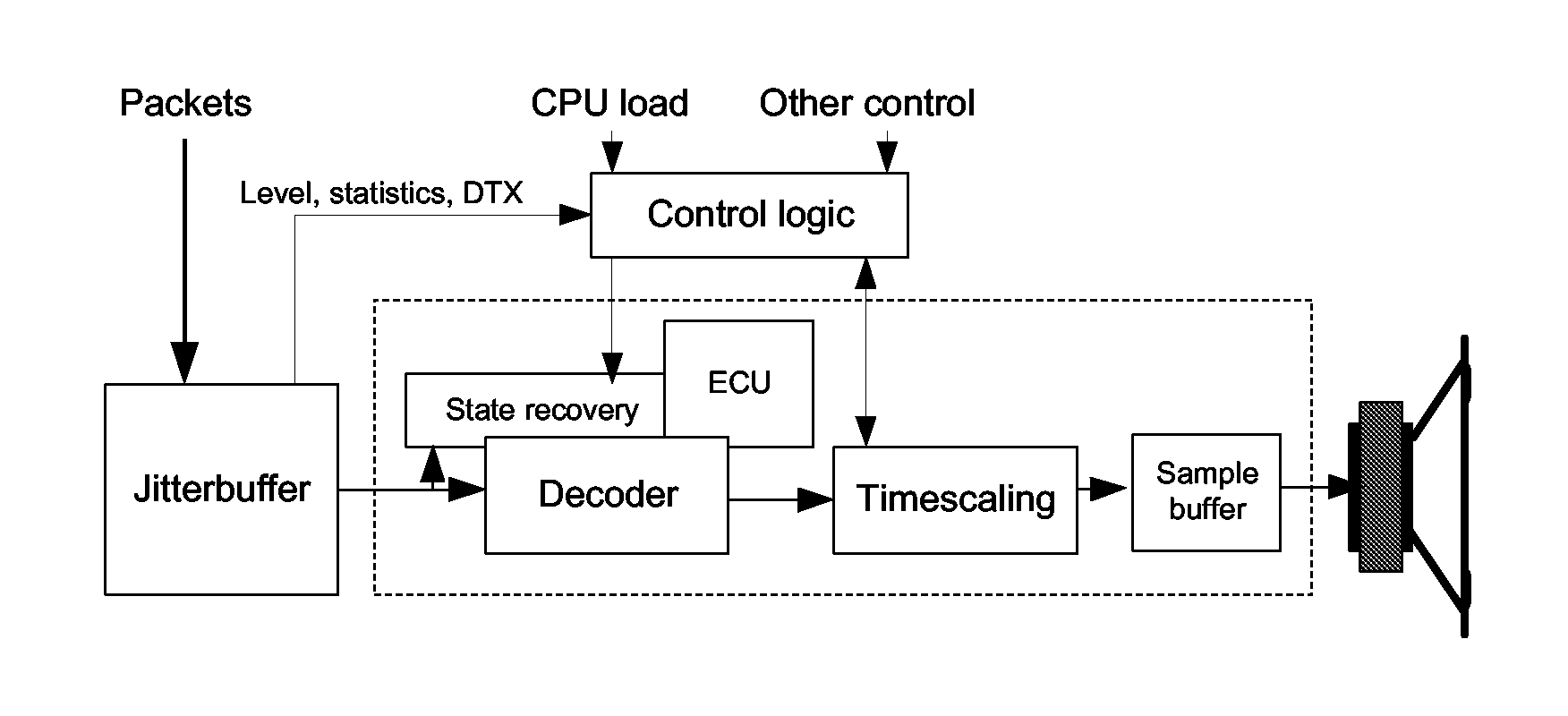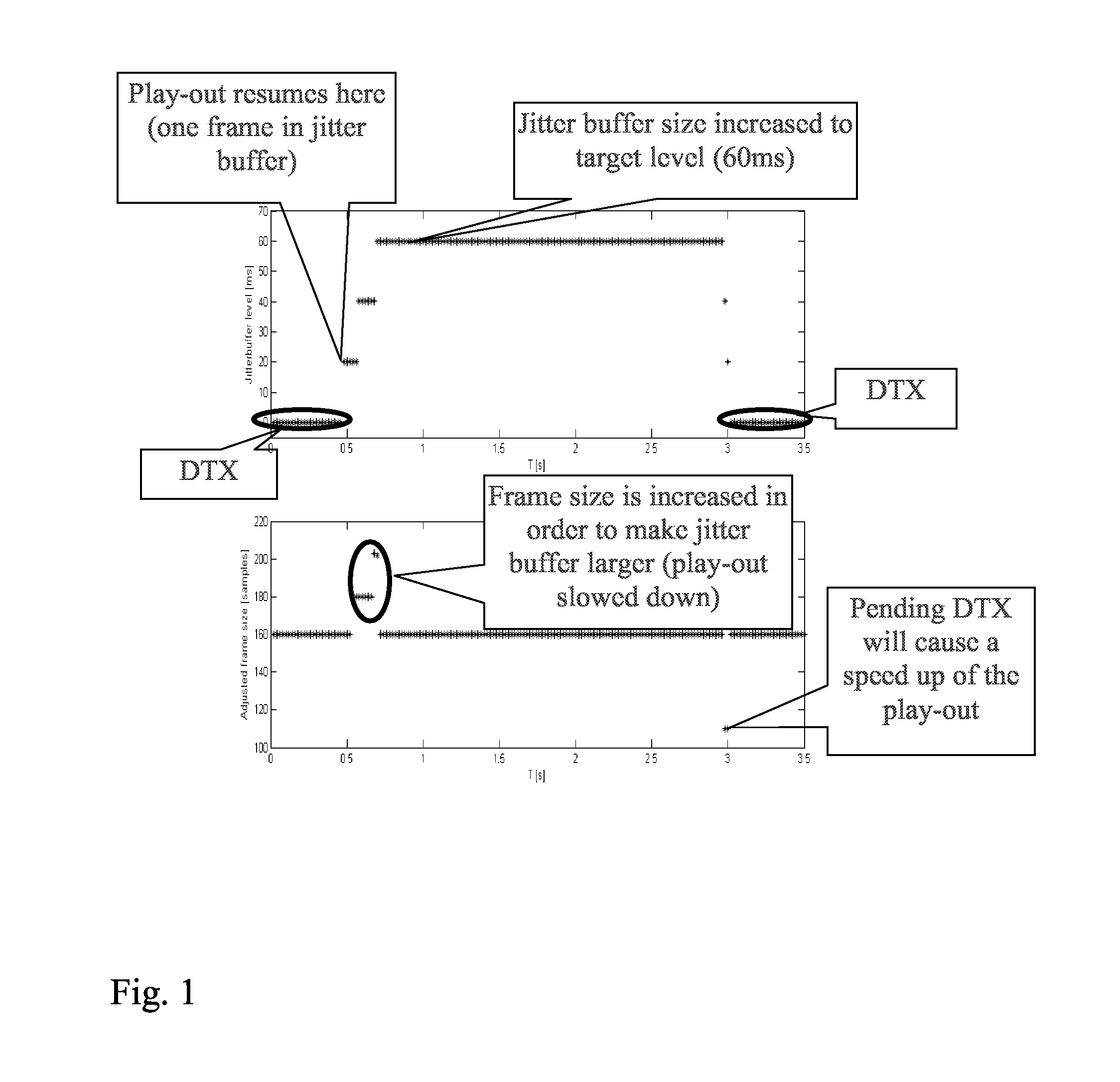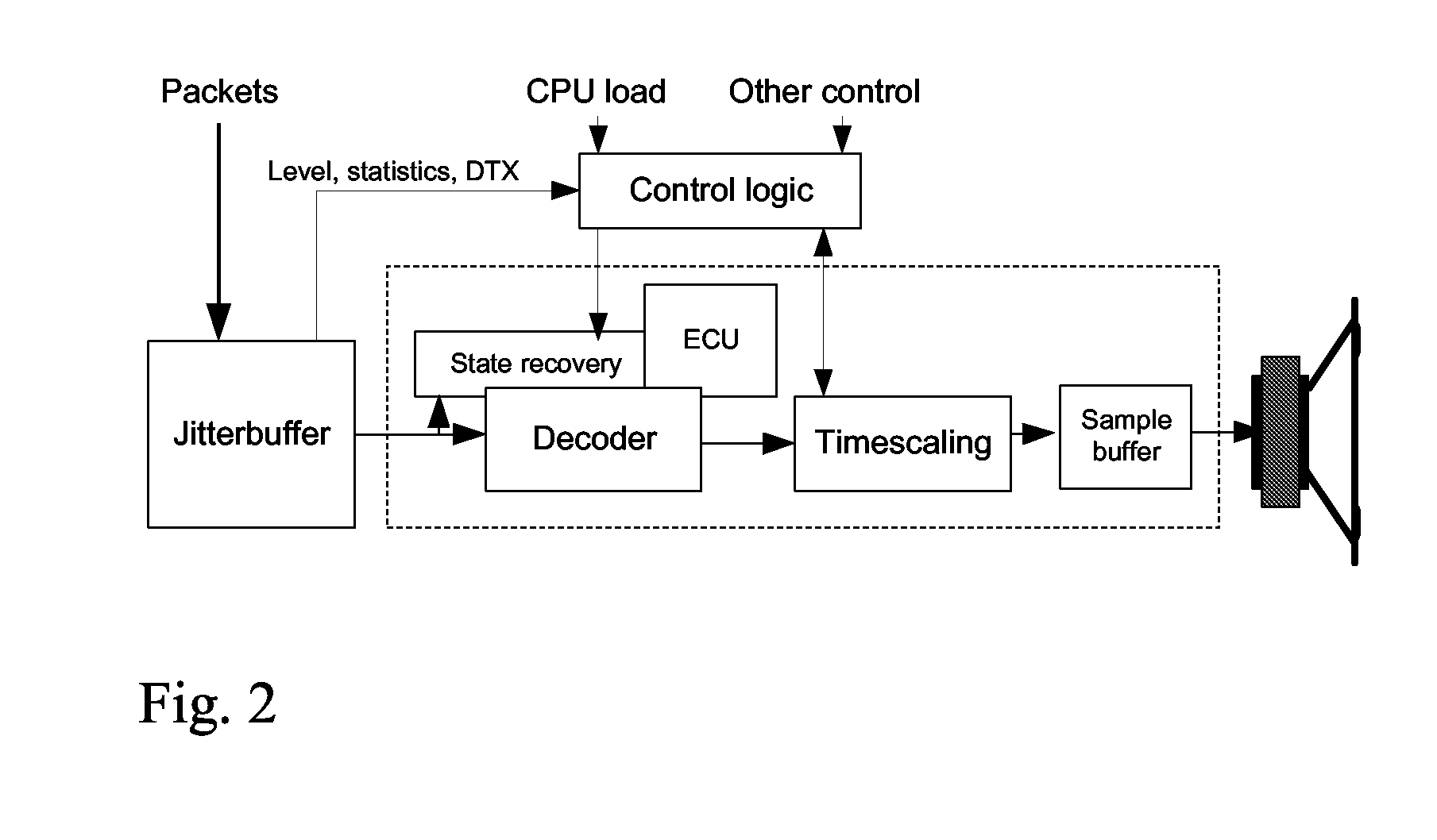Control mechanism for adaptive play-out with state recovery
a control mechanism and state recovery technology, applied in the field of buffering techniques, can solve problems such as delay jitter, packets may even arrive out of order, and inability to correct bit errors, and achieve the effects of improving the advantage of state recovery means, short initialization time, and aggressive time scaling
- Summary
- Abstract
- Description
- Claims
- Application Information
AI Technical Summary
Benefits of technology
Problems solved by technology
Method used
Image
Examples
Embodiment Construction
The present invention will be described more fully hereinafter with reference to the accompanying drawings, in which preferred embodiments of the invention are shown. This invention may, however, be embodied in many different forms and should not be construed as limited to the embodiments set forth herein; rather, these embodiments are provided so that this disclosure will be thorough and complete, and will fully convey the scope of the invention to those skilled in the art.
An overview of a receiver for a Voice over IP client is shown in FIG. 2. It should be noted that the present invention may also be applicable to Voice over ATM without IP and other systems where delay jitter occurs. The receiver comprises a jitter buffer means connected to a decoder and the decoder is further connected to a time scaling means. A state recovery means in connection with an Error Concealment (ECU) means may be connected to the jitter buffer means and the decoder. The receiver receives data packets v...
PUM
 Login to View More
Login to View More Abstract
Description
Claims
Application Information
 Login to View More
Login to View More - R&D
- Intellectual Property
- Life Sciences
- Materials
- Tech Scout
- Unparalleled Data Quality
- Higher Quality Content
- 60% Fewer Hallucinations
Browse by: Latest US Patents, China's latest patents, Technical Efficacy Thesaurus, Application Domain, Technology Topic, Popular Technical Reports.
© 2025 PatSnap. All rights reserved.Legal|Privacy policy|Modern Slavery Act Transparency Statement|Sitemap|About US| Contact US: help@patsnap.com



